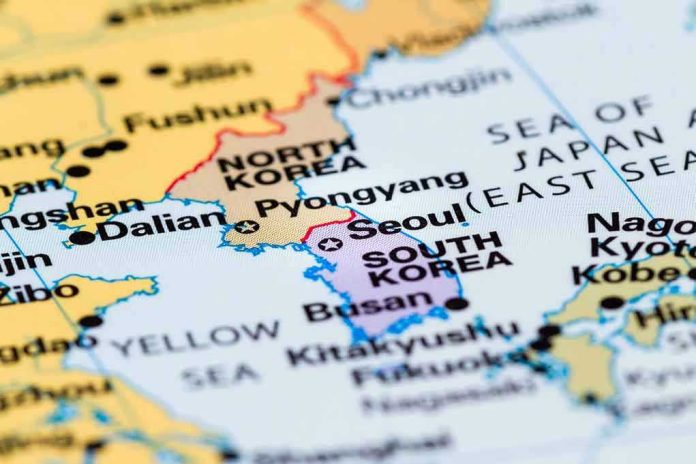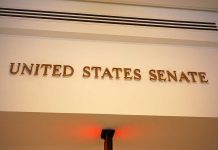
The chance of a spontaneous meeting between Donald Trump and Kim Jong-un during Trump’s Asia trip could redefine diplomatic norms on the Korean Peninsula.
Story Snapshot
- Trump is considering extending his stay in South Korea for a potential meeting with Kim Jong-un.
- No formal meeting has been confirmed, but both leaders have expressed openness to dialogue.
- The possibility of a surprise summit highlights the unpredictability of Trump’s diplomatic approach.
- The meeting could coincide with the APEC summit, amplifying its geopolitical significance.
Potential High-Stakes Meeting
President Donald Trump, during his Asia tour, is contemplating an extension of his stay in South Korea, possibly to meet North Korean leader Kim Jong-un. This comes amidst Trump’s public statements about his openness to dialogue with Kim, even suggesting a possible cross-border visit if Kim shows interest. Though there’s no formal confirmation as of October 27, 2025, the potential for a surprise summit looms large, reflecting the high-stakes diplomacy and ongoing uncertainty on the Korean Peninsula.
Historical context plays a significant role in understanding the gravity of this potential meeting. U.S.-North Korea relations have been fraught with hostility, interspersed with attempts at engagement. The Trump administration’s initial “maximum pressure” policy eventually gave way to direct diplomacy, notably the 2018 Singapore Summit, marking the first meeting between a sitting U.S. president and a North Korean leader. However, subsequent summits in Hanoi and the DMZ failed to yield lasting agreements, leading to a period of stalled negotiations.
Geopolitical Implications
The Korean Peninsula remains one of the world’s most volatile regions. North Korea’s nuclear ambitions, coupled with U.S. security commitments to South Korea and Japan, keep tensions high. The potential meeting between Trump and Kim could symbolize a diplomatic breakthrough or exacerbate existing tensions, depending on the outcomes. China and Russia’s roles as North Korea’s primary allies further complicate the geopolitical landscape, as their interests in regional stability and North Korea’s survival often conflict with U.S. objectives.
For Trump, this meeting could serve as a legacy-defining moment, highlighting his unconventional approach to diplomacy. For Kim, it offers a chance to seek sanctions relief and international recognition. South Korea, as a critical intermediary, desires reduced tensions and reassurance of its alliance with the U.S. Meanwhile, China and Russia prefer a stable, non-nuclear North Korea but remain wary of any U.S. military buildup in the region.
Diplomatic Strategies and Challenges
In the short term, a surprise meeting would capture global attention, potentially reducing tensions and leading to symbolic gestures like a border crossing. However, without substantive agreements, the diplomatic impact may remain superficial. Long-term, repeated summits without clear outcomes could diminish the diplomatic value of such high-level meetings, unless a breakthrough occurs. The ongoing mistrust and divergent objectives between the U.S. and North Korea pose significant challenges to any lasting resolution.
The affected parties include the Korean Peninsula, where reduced tensions could foster inter-Korean relations and humanitarian exchanges. Regional allies like Japan and South Korea might welcome a reduction in conflict risk but could be concerned about unilateral U.S. actions. Globally, the meeting could influence nonproliferation norms and the power dynamics in Asia. Economically, any easing of sanctions could lead to new investments in North Korea, although substantive denuclearization steps are unlikely without further negotiations.










